 |
 |
 |
| |
Safety and acceptability trial of the dapivirine vaginal ring in U.S. adolescents - Dapivirine Vaginal Ring Safe and Acceptable in US Adolescents
|
| |
| |
Dapivirine Vaginal Ring Safe and Acceptable in US Adolescents
9th IAS Conference on HIV Science (IAS 2017), July 23-26, 2017, Paris
Mark Mascolini
US girls 15 to 17 years old found the dapivirine vaginal ring easy to use, and safety problems proved rare in a 96-person placebo-controlled trial [1]. High plasma dapivirine levels and residual drug levels in used rings indicated high adherence during the study.
Two double-blind placebo-controlled trials, the Ring Study [2] and ASPIRE [3], found that dapivirine rings lowered HIV acquisition risk 31% and 27%. In ASPIRE protection from HIV was greater in women 25 or older (56%), while 18- to 21-year-olds gained no protection from the ring, probably because of low adherence. US researchers conducted a new study, MTN-023/IPM-030, to see if the dapivirine ring is safe and acceptable in 15- to 17-year-olds.
This phase 2a double-blind placebo-controlled trial recruited girls at six US sites. Researchers randomized them 3-to-1 to a 25-mg dapivirine ring or a placebo ring to be inserted every 4 weeks for 24 weeks. At the end of each month, participants returned used rings so residual dapivirine levels could be measured. Participants had to be healthy HIV-negative girls with a history of sexual activity. All were using an effective contraception method at enrollment.
Researchers randomized 73 girls to the dapivirine ring and 23 to a placebo ring. Age averaged 16.3 in the dapivirine group and 16.2 in the placebo group. Respective proportions of blacks were 47% and 57%, Hispanics 22% and 17%, and whites 27% and 17%. Girls in both study groups had a median of 3 lifetime sex partners, and 49% in both groups did not use a condom the last time they had sex.
Adverse event rates were low with the dapivirine ring and the placebo ring--11% and 9% for grade 2 events, and 4% and 0% for grade 3 events (P = 1.00 for both comparisons). Study clinicians directed participants to stop using the ring 7 times (10%) in the dapivirine arm and 2 times (9%) in the placebo arm, but toxicity was never the reason. Reasons included pelvic inflammatory disease, trichomonas, and pregnancy.
A large majority of plasma samples, 87%, had dapivirine levels above 95 pg/mL, a concentration indicating good adherence. Residual dapivirine levels in used rings lay below 23.5 mg, another good-adherence indicator, in 95% of returned rings. Under half of participants, 42%, said they never removed a ring except to replace it at the end of the month, but most removals were brief.
In acceptability surveys at 3 and 6 months, 95% of participants agreed "it was easy or very easy to use the ring," 93% said they "like the ring," and 87% never felt physical discomfort with the ring. Three quarters of participants said they were not at all aware of the ring during normal activities. More than half of these girls' sex partners, 59%, said they felt the ring during sex "never" or "not at all."
The researchers concluded that the dapivirine vaginal ring is safe and acceptable in 15- to 17-year-old US girls. They observed that "consistency between dapivirine plasma levels and residual dapivirine levels in used rings supports appropriate study product use." MTN-034, a phase 2a crossover trial, will assess safety and adherence to a vaginal dapivirine ring and oral tenofovir/emtricitabine in 16- to 21-year-olds in four African countries [4].
References
1. Bunge K, Levy L, Szydlo D, et al. Safety and acceptability trial of the dapivirine vaginal ring in U.S. adolescents. 9th IAS Conference on HIV Science (IAS 2017), July 23-26, 2017, Paris. Abstract TUAC0206LB.
2. Nel A, van Niekerk N, Kapiga S, et al. Safety and efficacy of a dapivirine vaginal ring for HIV prevention in women. N Engl J Med. 2016;375:2133-2143.
3. Baeten JM, Palanee-Phillips T, Brown ER, et al. Use of a vaginal ring containing dapivirine for HIV-1 prevention in women. N Engl J Med. 2016;375:2121-2132.
4. MTN Microbicide Trials Network. MTN-034/IPM 045. http://www.mtnstopshiv.org/studies/6826
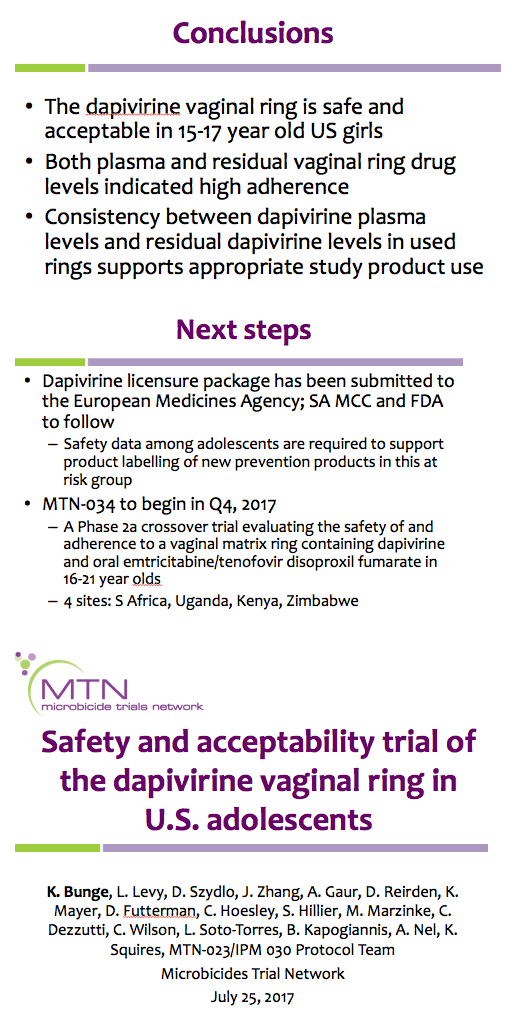
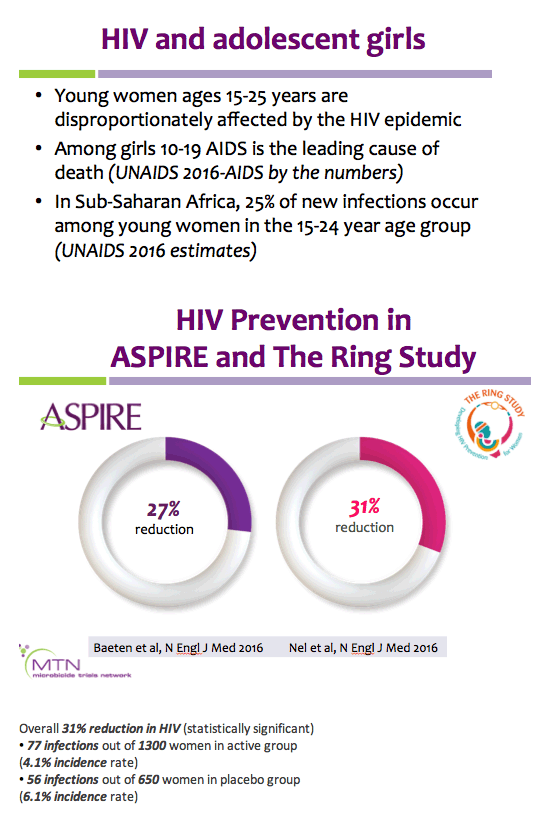
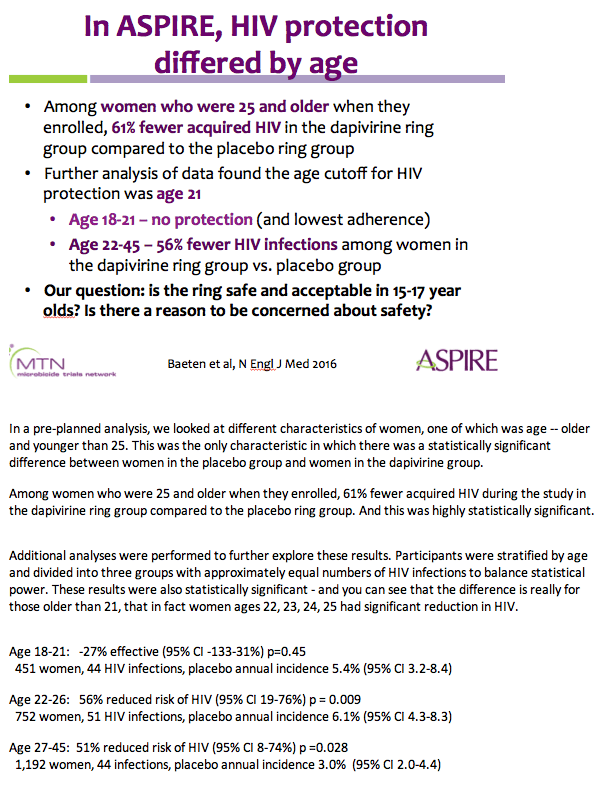
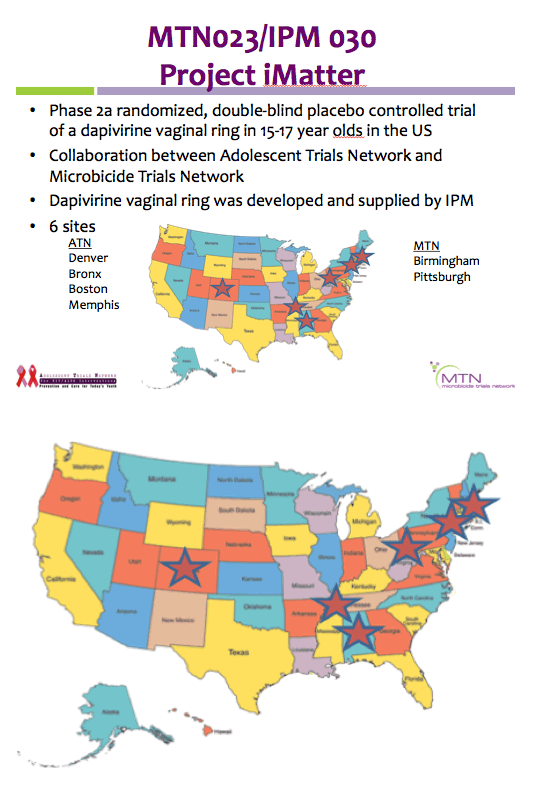
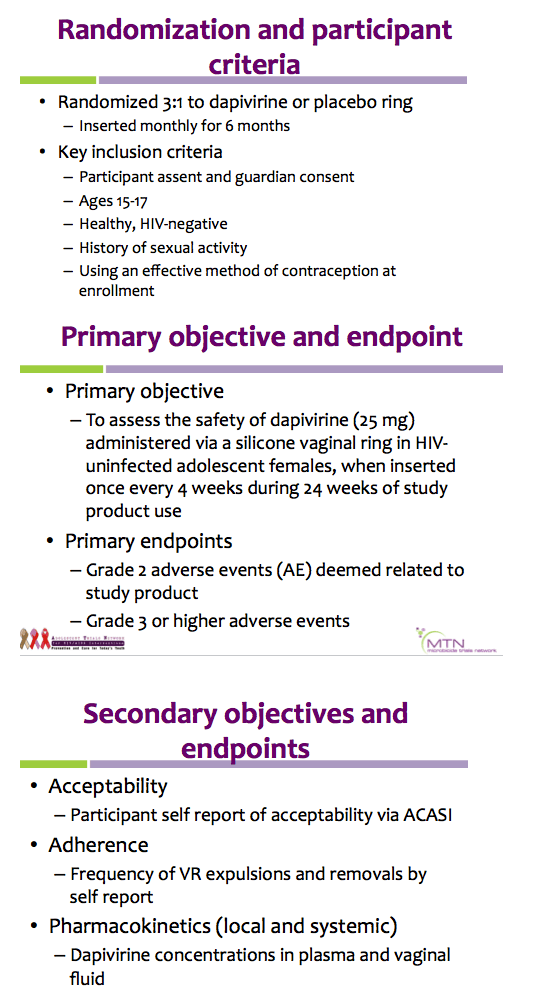
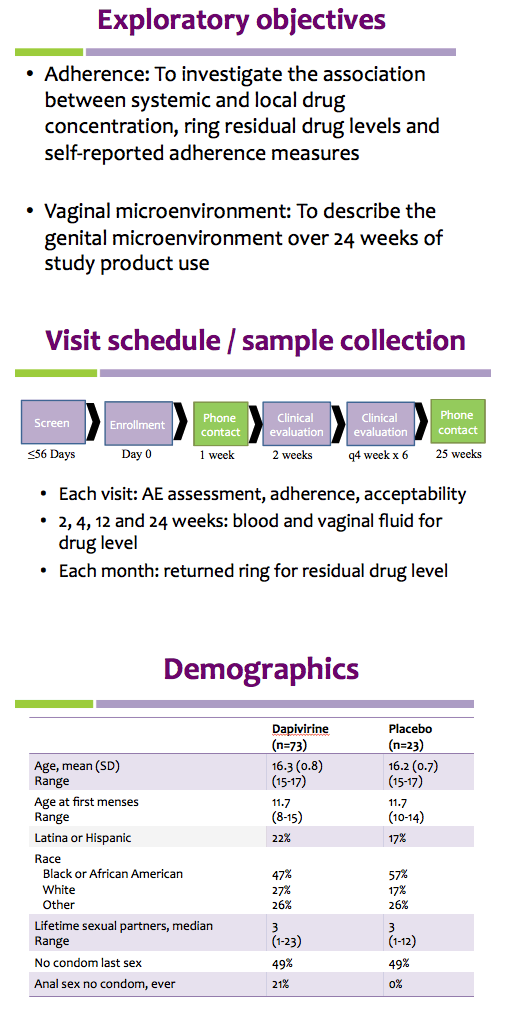
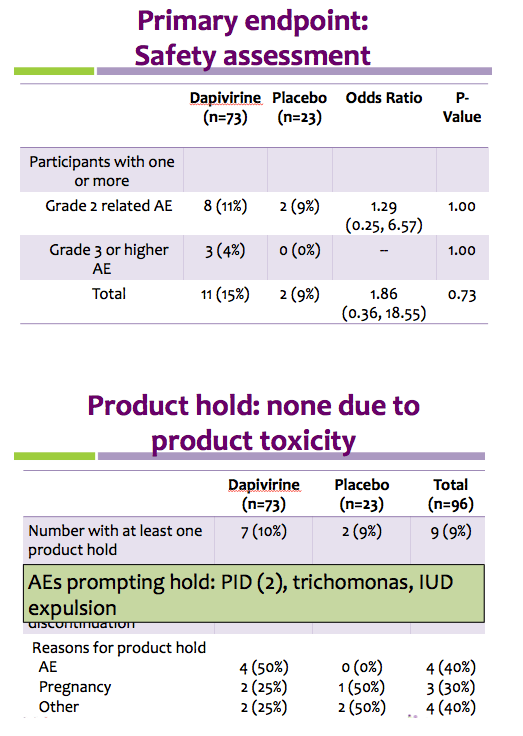

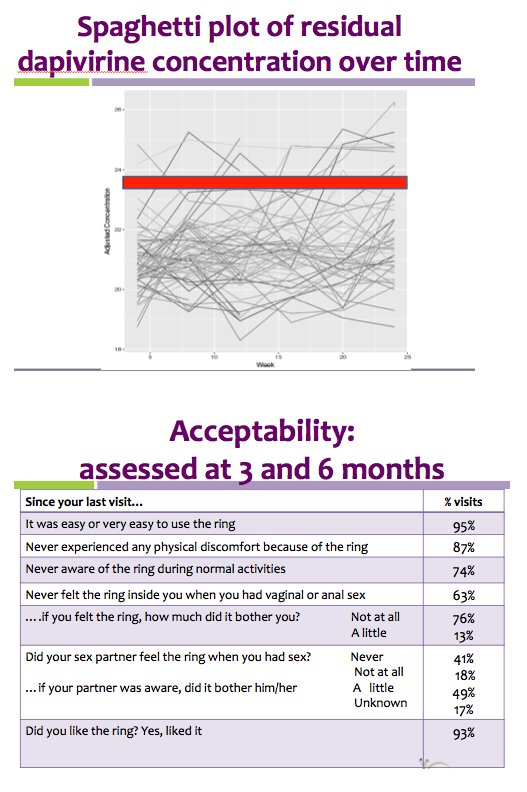
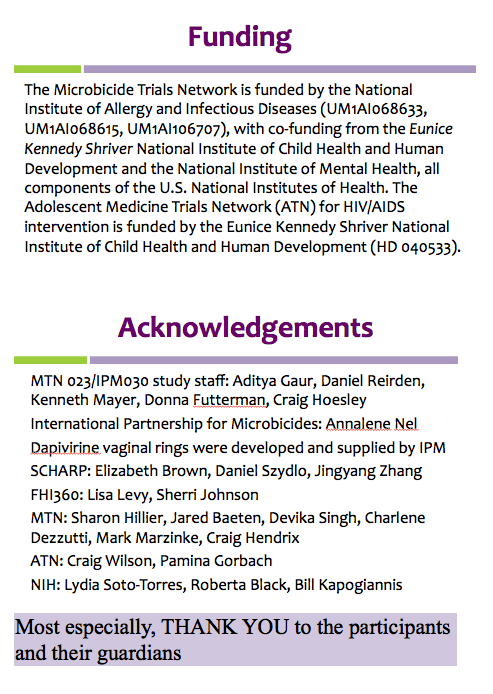
|
| |
|
 |
 |
|
|